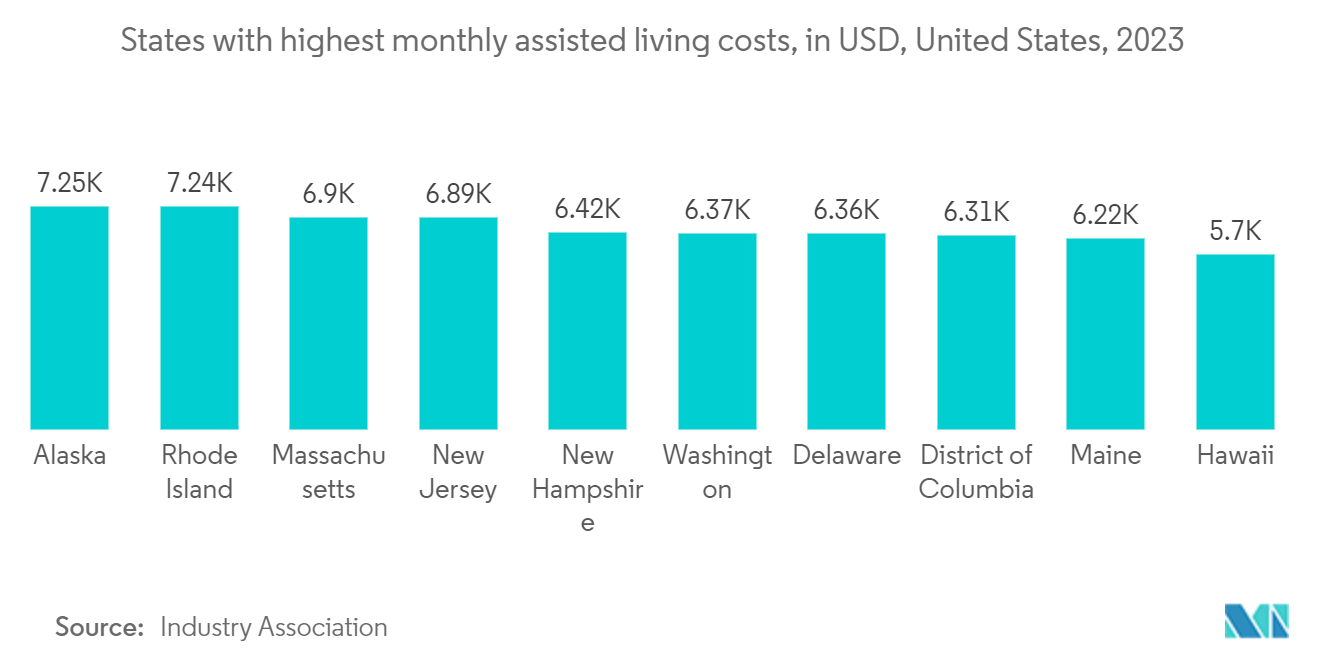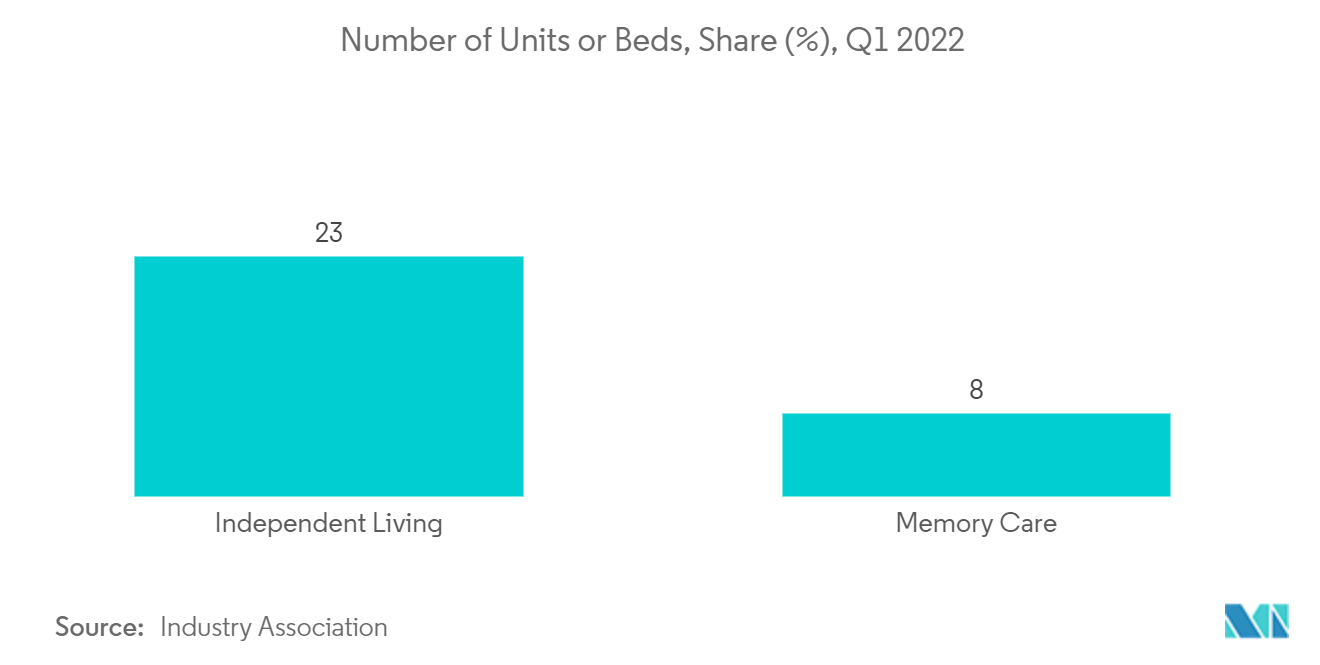Market Trends of United States Senior Living Industry
Senior Housing Witnessing Increased Demand
- According to data from the National Investment Centre for Older Persons, occupancy rates are at an all-time high in the elderly housing and care sector. With an occupancy rate of 82.1% as of August 2023, assisted living had the highest quarterly increase in all categories of care. The occupancy rate is 85.2% in the area of senior living, which covers both assisted and independently lived accommodation and memory care.
- There are approximately 32,820 assisted living communities in the United States, according to the most recent data from the National Center for Assisted Living. Almost 1.28 million assisted living beds are registered with the National Centre for Active Living. As the population of people over 65 is expected to almost double by 2060, care facilities are also expected to grow similarly.
- Most assisted living communities (over 80%) are for-profit, but according to the National Center for Assisted Living (NCAL), nonprofit communities continue to outpace their national-brand counterparts. Nonprofit communities tend to be smaller, with higher occupancy rates but potentially fewer amenities. According to NCAL, the living sector employed nearly 480,500 full-time employees as of January 2023.
- All staff, such as managers, sales representatives, care assistants, cooks, janitors, and maintenance workers, are included. Approximately 300 million of the 480 million workers are full-time healthcare and social services employees.

Nursing Care Communities Experiencing Significant Growth
- The demand for nursing care is increasing significantly due to the increase in the baby boomer generation, born before World War 2, in the United States. This aging population requires higher health support and more senior living communities. Furthermore, the nursing community sector is driven by severe health conditions of senior citizens, such as chronic heart diseases, Alzheimer's and dementia, arthritis, and high blood pressure, which need to be monitored by skilled nursing staff.
- In addition, they provide typical services, including nursing care, 24-hour supervision, three meals a day, and assistance with everyday activities. These centers offer physical, occupational, speech therapy, and other rehabilitation services. On the other hand, the prices of the beds increased by 22%, with expenses averaging USD 3,320 per bed for nursing care.
- In addition, a significant number of service units or beds are contributed to nursing care, amounting to more than 46%, which accounts for approximately 43,725 beds with skilled nursing staff. In addition, they provide typical services, including nursing care, 24-hour supervision, three meals a day, and assistance with everyday activities. These centers offer physical, occupational, speech therapy, and other rehabilitation services.
- On the other hand, the prices of the beds increased by 22%, with expenses averaging USD 3,320 per bed for nursing care. In addition, a significant number of service units or beds are contributed to nursing care, amounting to more than 46%, which accounts for approximately 43,725 beds with skilled nursing staff.

